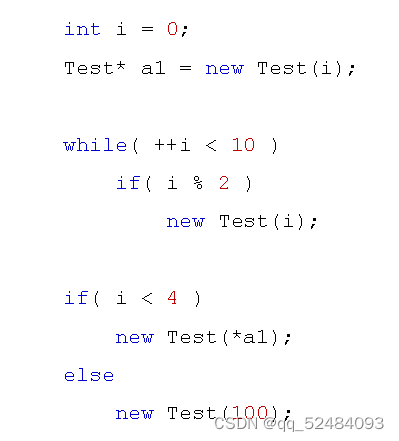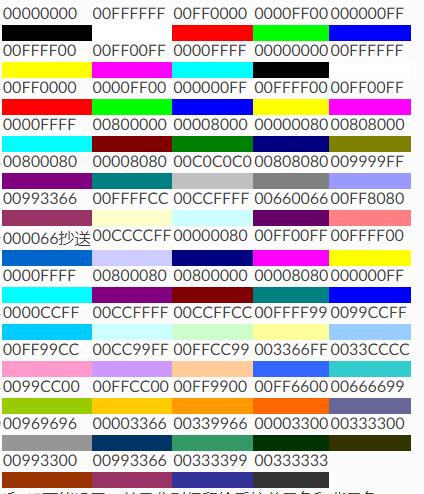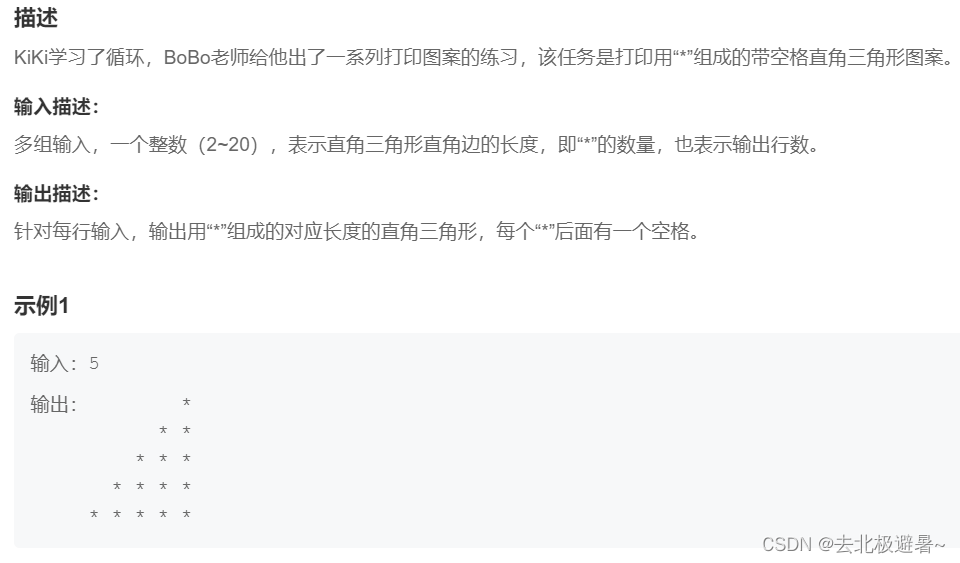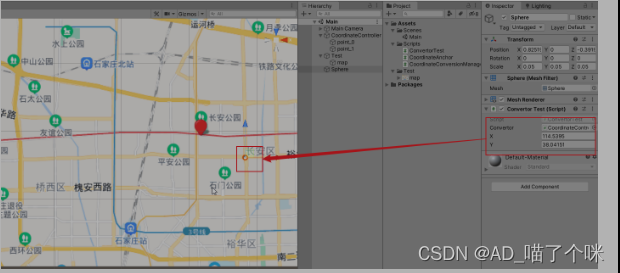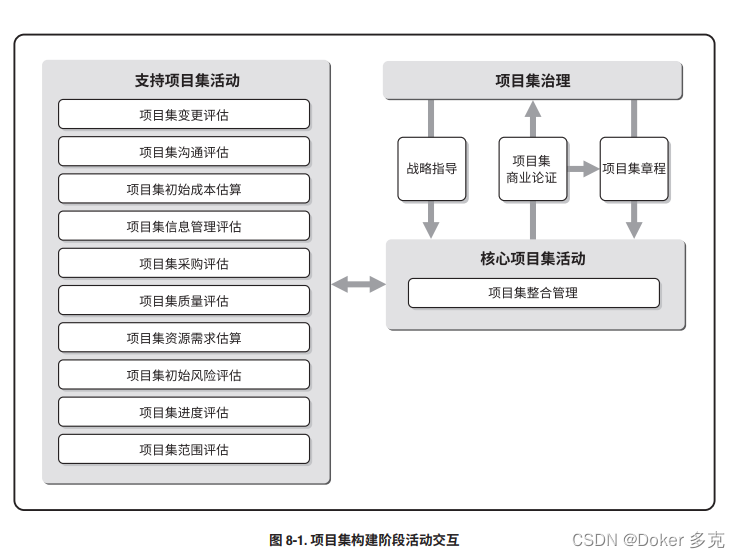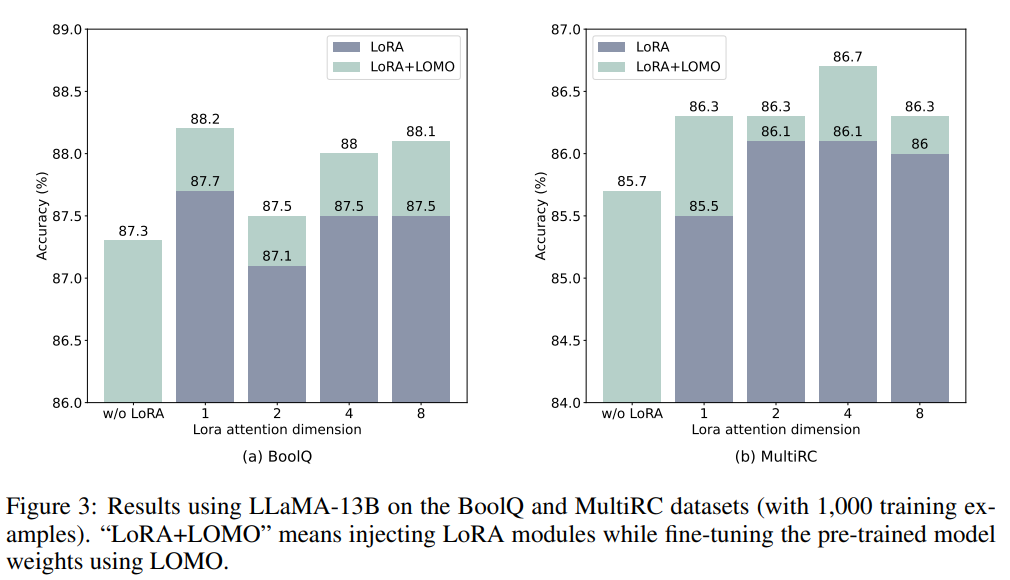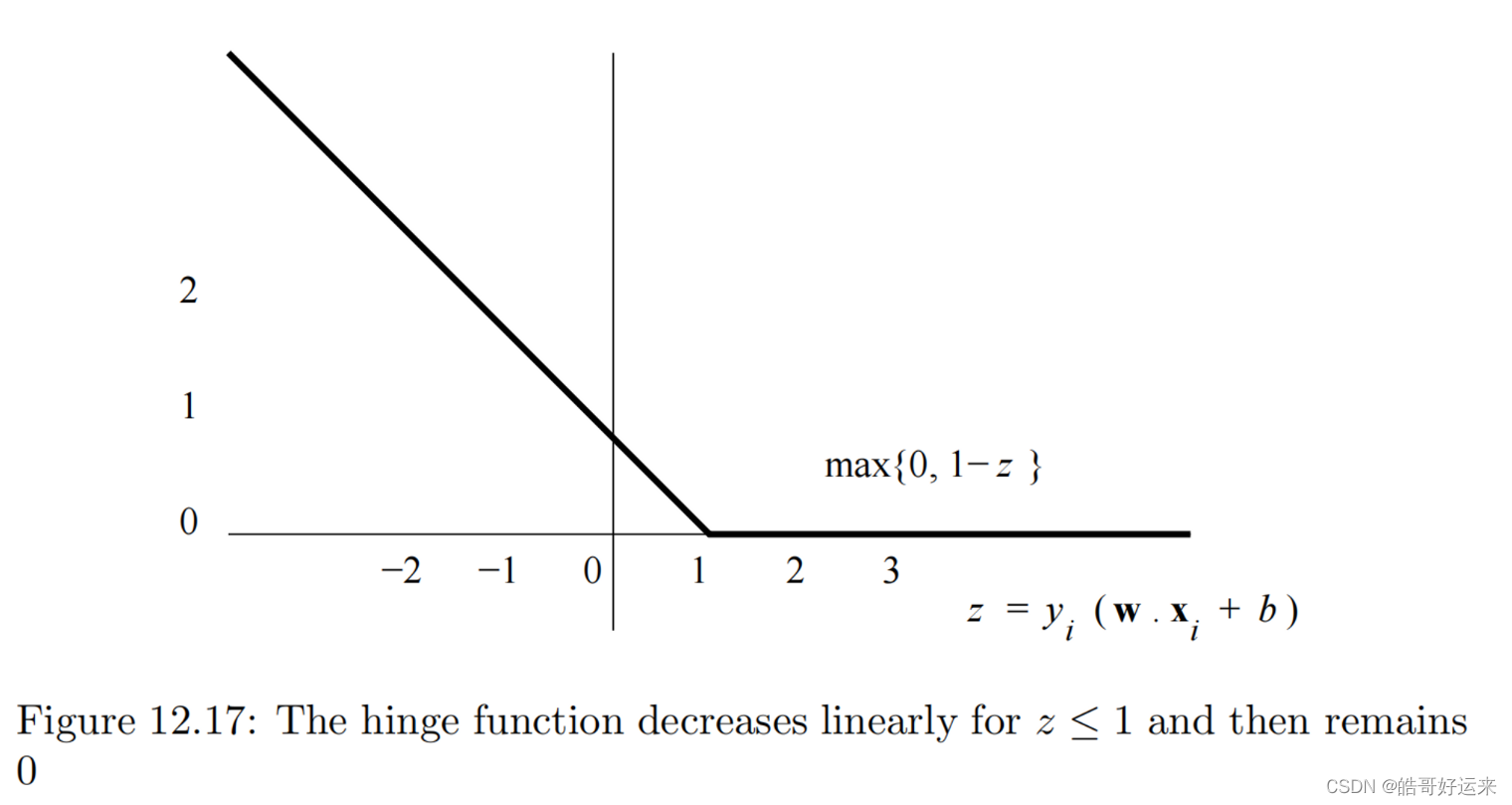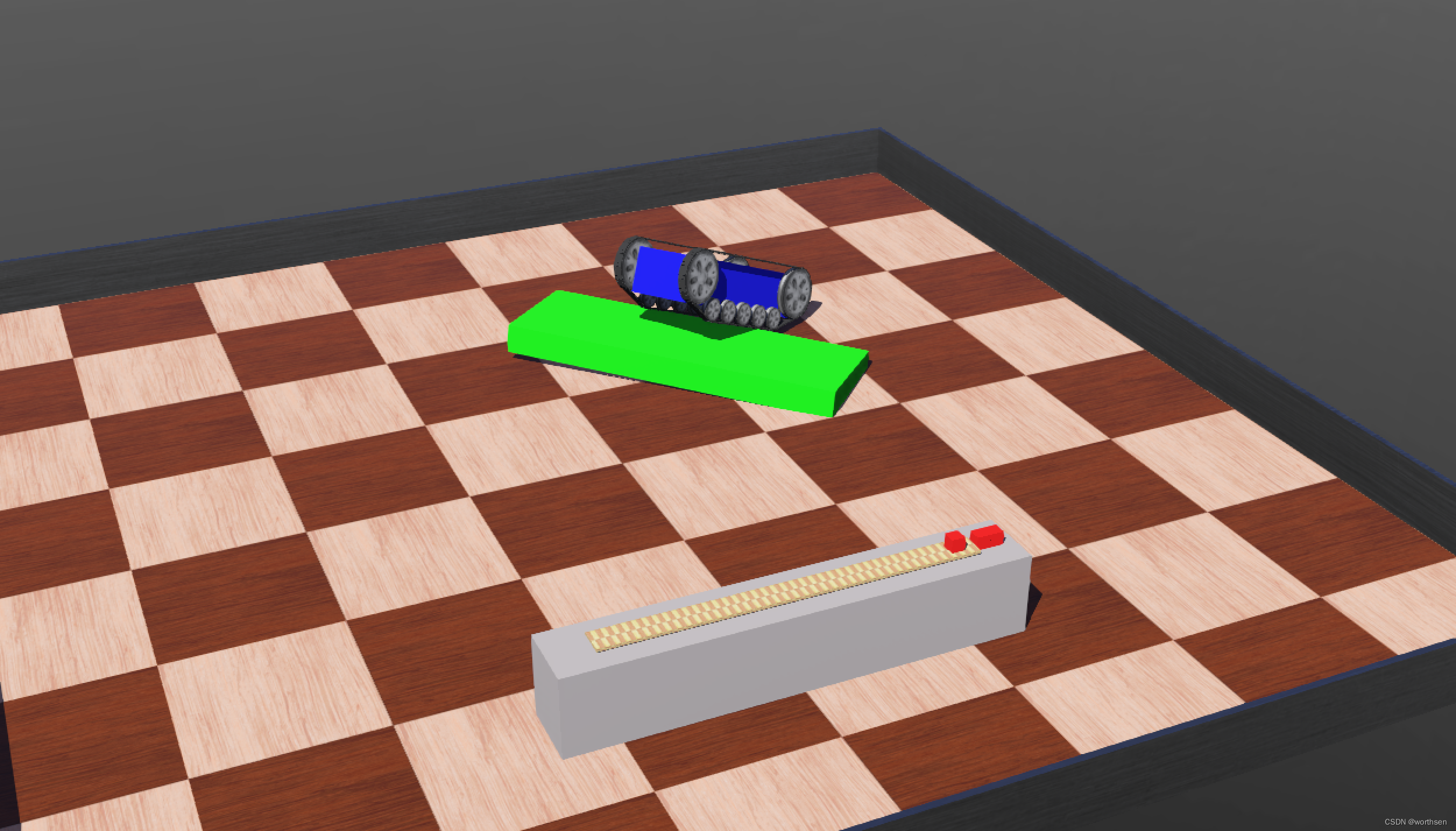目录
Day_54基于 M-distance 的推荐
一. 关于M-distance 的推荐
1. 基本数据说明
2. 推荐系统的算法过程
3. 简单思考
二. 代码复现
1. 数据导入
2. 代码的初始化
3. 核心代码
3.1 基础数据的构建
3.2 leave-out-leave测试
3.3 误差计算
Day_55基于 M-distance 的推荐 (续)
一. 解法思路
二. 运行结果
三. 补充54天的代码:
Day_54基于 M-distance 的推荐
一. 关于M-distance 的推荐
1. 基本数据说明
首先我们要明确什么是M-distance 的推荐,其本质和kNN算法有异曲同工之妙,kNN算法是根据邻居的种类来判断测试样本的种类,那么同样的道理,M-distance推荐也是根据邻居的属性来确定样本的属性。那该怎么做呢?
首先我们根据样本的数据入手:输入的数据是100000行3列的矩阵,这个矩阵是稀疏矩阵,我们将原本的稀疏矩阵还原为普通矩阵更好理解如图G1所示。这100000×3的矩阵的3列分别代表“①评分人”,“②评分的事物”,“③这个人对这个事物打多少分”,这个0分表示不是这个人对这个项目打0分,而是这个人没有对这个项目打分(一个人不可能看完所有的项目)。我们知道同一个人是不是可以对不同的事物打分?不同的人是不是可以对同一个事物打分?同样的道理一个人对于不同的项目有不同的分数(一行数据所示),同一个项目对于不同的人有不同的分数(一列数据所示)(如图G1所示)

现在的问题是:若我知道这里面的所有数据99999个数据,还有一个数据不知道多少分,那么我们该怎么样估计这个分数?
2. 推荐系统的算法过程
这里的估计过程和kNN算法有所不同,kNN算法直接根据周围点的远近即可估计(一维),但是这里我们有两个量(二维),第i个人对第j个项目的评分,所以我们不能简单的只考虑行或者列而是要将两者都考虑进来。
首先我们算出每个项目的平均评分情况(将每个项目对应的列的数据相加(只加非0部分的数据),再除以这列的非0的个数。得到的结果如上图G1ave所示),接着我们设置阈值参数,然后将ave的每一个值与样本(样本是第i行第j列)对应的ave的j列的值作比较,若在ave[ j ]
的范围内,则记录对应的项目的列(2,5) (这里要把0除开,我自己画的矩阵参数不是太好可以参考——博客),最后根据我们所得到第i行所记录项目的列的平均数[(i,2)+(i,5)]/2,估计样本的值。
3. 简单思考
其实M-distance 的推荐也还是一个估计的过程,相较于kNN,只不过估计考虑的参数变多了(由以前的一维变为二维),但是思想仍然没有改变。它的思维过程有点类似于:找到平均值相等(差距不大)的项目,接着找这个人对这些项目的评分,然后用这些项目的评分来估计位置的评分。
二. 代码复现
这个部分是这个算法的实现部分,我的建议是必须要搞明白M-distance 的推荐系统的思维过程才能看得懂代码,否则是肯定不行,而且由于这里面变量非常多,一个不小心就不知道这个变量代表的是哪一个数值参数了,所以两点建议①直到M-distance 的推荐系统的思维过程,需要什么参数(平均数,阈值...)②代码的话还是模拟计算机用脑子自己过一遍,这样理解起来更快,变量多了之后可以先记录看这个变量是怎么样使用的,再结合变量的名称就可以知道这个变量代表的含义了
1. 数据导入
导入数据的路径在D盘data文件夹movielens-943u1682m.txt文件
MBR tempRecommender = new MBR("D:/data/movielens-943u1682m.txt",
943, 1682, 100000);2. 代码的初始化
违约的设定值DEFAULT_RATING;传入的评分人的总数numUsers;项目总数numItems;输入数据的总条数(100000)numRatings;预测的结果predictions;compressedRatingMatrix矩阵用于存放输入的100000条数据,第一列存放评分人,第二列存放项目,第三列存放这个人对这个项目的评分;userDegrees存放这个人对多少个项目评分;userAverageRatings存放每个人的项目的平均打分;itemDegrees存放每个项目被多少人评过分;itemAverageRatings存放每个项目的平均分;userStartingIndices存放每个人评分开始对应的编号(0号人从0开始(默认值),比如0号人评了5个项目,那么1号人就是从第5号开始,userStartingIndices[1]=5);numNonNeighbors存储违约值;radius存放距离的阈值。
/**
* Default rating for 1-5 points.
*/
public static final double DEFAULT_RATING = 3.0;
/**
* The total number of users.
*/
private int numUsers;
/**
* The total number of items.
*/
private int numItems;
/**
* The total number of ratings (non-zero values)
*/
private int numRatings;
/**
* The predictions.
*/
private double[] predictions;
/**
* Compressed rating matrix. User-item-rating triples.
*/
private int[][] compressedRatingMatrix;
/**
* The degree of users (how many item he has rated).
*/
private int[] userDegrees;
/**
* The average rating of the current user.
*/
private double[] userAverageRatings;
/**
* The degree of users (how many item he has rated).
*/
private int[] itemDegrees;
/**
* The average rating of the current item.
*/
private double[] itemAverageRatings;
/**
* The first user start from 0. Let the first user has x ratings, the second
* user will start from x.
*/
private int[] userStartingIndices;
/**
* Number of non-neighbor objects.
*/
private int numNonNeighbors;
/**
* The radius (delta) for determining the neighborhood.
*/
private double radius;3. 核心代码
3.1 基础数据的构建
传入文件的路径,文件的总条数paraNumRatings,有多少人paraNumUsers,有多少项目paraNumItems。
tempString用于记录文件的每一行的数据,将这每一行的数据按“,”分割,存放在compressedRatingMatrix的每一列。userDegrees记录每个人对多少项目数评分,itemDegrees记录每个项目被多少人评分,userStartingIndices记录每个人开始的编号,tempUserTotalScore记录每个人的评分的总和,tempItemTotalScore记录每个项目的总分,userAverageRatings记录每个人的平均分,itemAverageRatings记录每个项目的平均分。
public MBR(String paraFilename, int paraNumUsers, int paraNumItems, int paraNumRatings) throws Exception {
// Step 1. Initialize these arrays
numItems = paraNumItems;
numUsers = paraNumUsers;
numRatings = paraNumRatings;
userDegrees = new int[numUsers];
userStartingIndices = new int[numUsers + 1];
userAverageRatings = new double[numUsers];
itemDegrees = new int[numItems];
compressedRatingMatrix = new int[numRatings][3];
itemAverageRatings = new double[numItems];
predictions = new double[numRatings];
System.out.println("Reading " + paraFilename);
// Step 2. Read the data file.
File tempFile = new File(paraFilename);
if (!tempFile.exists()) {
System.out.println("File " + paraFilename + " does not exists.");
System.exit(0);
} // Of if
BufferedReader tempBufReader = new BufferedReader(new FileReader(tempFile));
String tempString;
String[] tempStrArray;
int tempIndex = 0;
userStartingIndices[0] = 0;
userStartingIndices[numUsers] = numRatings;
while ((tempString = tempBufReader.readLine()) != null) {
// Each line has three values
tempStrArray = tempString.split(",");
compressedRatingMatrix[tempIndex][0] = Integer.parseInt(tempStrArray[0]);
compressedRatingMatrix[tempIndex][1] = Integer.parseInt(tempStrArray[1]);
compressedRatingMatrix[tempIndex][2] = Integer.parseInt(tempStrArray[2]);
userDegrees[compressedRatingMatrix[tempIndex][0]]++;
itemDegrees[compressedRatingMatrix[tempIndex][1]]++;
if (tempIndex > 0) {
// Starting to read the data of a new user.
if (compressedRatingMatrix[tempIndex][0] != compressedRatingMatrix[tempIndex - 1][0]) {
userStartingIndices[compressedRatingMatrix[tempIndex][0]] = tempIndex;
} // Of if
} // Of if
tempIndex++;
} // Of while
tempBufReader.close();
double[] tempUserTotalScore = new double[numUsers];
double[] tempItemTotalScore = new double[numItems];
for (int i = 0; i < numRatings; i++) {
tempUserTotalScore[compressedRatingMatrix[i][0]] += compressedRatingMatrix[i][2];
tempItemTotalScore[compressedRatingMatrix[i][1]] += compressedRatingMatrix[i][2];
} // Of for i
for (int i = 0; i < numUsers; i++) {
userAverageRatings[i] = tempUserTotalScore[i] / userDegrees[i];
} // Of for i
for (int i = 0; i < numItems; i++) {
itemAverageRatings[i] = tempItemTotalScore[i] / itemDegrees[i];
} // Of for i
}// Of the first constructor
3.2 leave-out-leave测试
tempItemAverageRating记录除去某一个位置的数据之后的项目平均值q,如果这个被挖去的位置的这一行的项目平局值小于q阈值,则记录这个项目对应的列,并且将这个位置的评分值加到tempTotal,邻居数自加1,如果被挖去的这个位置的邻居数大于0,则用tempTotal除以邻居数得到这个位置的评分——基于项目的评分
/**
*************************
* Leave-one-out prediction. The predicted values are stored in predictions.
*
* @see predictions
*************************
*/
public void leaveOneOutPrediction() {
double tempItemAverageRating;
// Make each line of the code shorter.
int tempUser, tempItem, tempRating;
System.out.println("\r\nLeaveOneOutPrediction for radius " + radius);
numNonNeighbors = 0;
for (int i = 0; i < numRatings; i++) {
tempUser = compressedRatingMatrix[i][0];
tempItem = compressedRatingMatrix[i][1];
tempRating = compressedRatingMatrix[i][2];
// Step 1. Recompute average rating of the current item.
tempItemAverageRating = (itemAverageRatings[tempItem] * itemDegrees[tempItem] - tempRating)
/ (itemDegrees[tempItem] - 1);
// Step 2. Recompute neighbors, at the same time obtain the ratings
// Of neighbors.
int tempNeighbors = 0;
double tempTotal = 0;
int tempComparedItem;
for (int j = userStartingIndices[tempUser]; j < userStartingIndices[tempUser + 1]; j++) {
tempComparedItem = compressedRatingMatrix[j][1];
if (tempItem == tempComparedItem) {
continue;// Ignore itself.
} // Of if
if (Math.abs(tempItemAverageRating - itemAverageRatings[tempComparedItem]) < radius) {
tempTotal += compressedRatingMatrix[j][2];
tempNeighbors++;
} // Of if
} // Of for j
// Step 3. Predict as the average value of neighbors.
if (tempNeighbors > 0) {
predictions[i] = tempTotal / tempNeighbors;
} else {
predictions[i] = DEFAULT_RATING;
numNonNeighbors++;
} // Of if
} // Of for i
}// Of leaveOneOutPrediction3.3 误差计算
MAE:预测值-真实值的绝对值除以所有的数据数(100000)
/**
*************************
* Compute the MAE based on the deviation of each leave-one-out.
*
* @author Fan Min
*************************
*/
public double computeMAE() throws Exception {
double tempTotalError = 0;
for (int i = 0; i < predictions.length; i++) {
tempTotalError += Math.abs(predictions[i] - compressedRatingMatrix[i][2]);
} // Of for i
return tempTotalError / predictions.length;
}// Of computeMAERSME:预测值-真实值的绝对值的平方除以所有数据数(100000)
/**
*************************
* Compute the MAE based on the deviation of each leave-one-out.
*
* @author Fan Min
*************************
*/
public double computeRSME() throws Exception {
double tempTotalError = 0;
for (int i = 0; i < predictions.length; i++) {
tempTotalError += (predictions[i] - compressedRatingMatrix[i][2])
* (predictions[i] - compressedRatingMatrix[i][2]);
} // Of for i
double tempAverage = tempTotalError / predictions.length;
return Math.sqrt(tempAverage);
}// Of computeRSMEDay_55基于 M-distance 的推荐 (续)
一. 解法思路
第54天实现的是item-based recommendation,即基于项目的推荐,今天我们要实现的基于 user-based recommendation即基于用户的推荐,其实本质上的计算方法并没有改变,只是将矩阵转置即可。
这里我写了一个函数,用于转置压缩矩阵,再将它存储为一个文件,最后再将这个文件读入,像第54天解决问题的方法一样即可。
package Day_55;
/**
* Recommendation with M-distance.
* @author Fan Min minfanphd@163.com.
*/
import java.io.*;
public class MBR1 {
/**
* Compressed rating matrix. User-item-rating triples.
*/
private int[][] compressedRatingMatrix;
public MBR1(String paraFilename, int paraNumUsers, int paraNumItems,
int paraNumRatings)throws Exception {
int user,item,score;
String tempString;
String[] tempStrArray;
compressedRatingMatrix=new int [paraNumRatings][3];
int[][] matrix=new int [paraNumUsers][paraNumItems];
File tempFile = new File(paraFilename);
if (!tempFile.exists()) {
System.out.println("File " + paraFilename + " does not exists.");
System.exit(0);
} // Of if
BufferedReader tempBufReader = new BufferedReader(new FileReader(tempFile));
while ((tempString = tempBufReader.readLine()) != null) {
tempStrArray = tempString.split(",");
user = Integer.parseInt(tempStrArray[0]);
item = Integer.parseInt(tempStrArray[1]);
score = Integer.parseInt(tempStrArray[2]);
matrix[user][item]=score;
}
int k=0;
for (int i = 0; i <paraNumItems ; i++) {
for (int j = 0; j < paraNumUsers; j++) {
if(matrix[j][i]!=0){
compressedRatingMatrix[k][2]=matrix[j][i];
compressedRatingMatrix[k][0]=i;
compressedRatingMatrix[k][1]=j;
k++;
}
}
}
PrintStream ps = new PrintStream("D:/data/ceshi.txt");
System.setOut(ps);
for(int i=0;i<paraNumRatings;i++){
System.out.println(compressedRatingMatrix[i][0]+","+compressedRatingMatrix[i][1]+
","+compressedRatingMatrix[i][2]);
}
ps.close();
}
/**
*************************
* The entrance of the program.
*
* @param args
* Not used now.
*************************
*/
public static void main(String[] args) {
try {
MBR1 tempRecommender = new MBR1("D:/data/movielens-943u1682m.txt", 943, 1682, 100000);
} catch (Exception ee) {
System.out.println(ee);
} // Of try
}// Of main
}// Of class MBR二. 运行结果

三. 补充54天的代码:
package Day_55;
/**
* Recommendation with M-distance.
* @author Fan Min minfanphd@163.com.
*/
import java.io.BufferedReader;
import java.io.File;
import java.io.FileReader;
public class MBR {
/**
* Default rating for 1-5 points.
*/
public static final double DEFAULT_RATING = 3.0;
/**
* The total number of users.
*/
private int numUsers;
/**
* The total number of items.
*/
private int numItems;
/**
* The total number of ratings (non-zero values)
*/
private int numRatings;
/**
* The predictions.
*/
private double[] predictions;
/**
* Compressed rating matrix. User-item-rating triples.
*/
private int[][] compressedRatingMatrix;
/**
* The degree of users (how many item he has rated).
*/
private int[] userDegrees;
/**
* The average rating of the current user.
*/
private double[] userAverageRatings;
/**
* The degree of users (how many item he has rated).
*/
private int[] itemDegrees;
/**
* The average rating of the current item.
*/
private double[] itemAverageRatings;
/**
* The first user start from 0. Let the first user has x ratings, the second
* user will start from x.
*/
private int[] userStartingIndices;
/**
* Number of non-neighbor objects.
*/
private int numNonNeighbors;
/**
* The radius (delta) for determining the neighborhood.
*/
private double radius;
/**
*************************
* Construct the rating matrix.
*
* @param paraRatingFilename
* the rating filename.
* @param paraNumUsers
* number of users
* @param paraNumItems
* number of items
* @param paraNumRatings
* number of ratings
*************************
*/
public MBR(String paraFilename, int paraNumUsers, int paraNumItems, int paraNumRatings) throws Exception {
// Step 1. Initialize these arrays
numItems = paraNumItems;
numUsers = paraNumUsers;
numRatings = paraNumRatings;
userDegrees = new int[numUsers];
userStartingIndices = new int[numUsers + 1];
userAverageRatings = new double[numUsers];
itemDegrees = new int[numItems];
compressedRatingMatrix = new int[numRatings][3];
itemAverageRatings = new double[numItems];
predictions = new double[numRatings];
System.out.println("Reading " + paraFilename);
// Step 2. Read the data file.
File tempFile = new File(paraFilename);
if (!tempFile.exists()) {
System.out.println("File " + paraFilename + " does not exists.");
System.exit(0);
} // Of if
BufferedReader tempBufReader = new BufferedReader(new FileReader(tempFile));
String tempString;
String[] tempStrArray;
int tempIndex = 0;
userStartingIndices[0] = 0;
userStartingIndices[numUsers] = numRatings;
while ((tempString = tempBufReader.readLine()) != null) {
// Each line has three values
tempStrArray = tempString.split(",");
compressedRatingMatrix[tempIndex][0] = Integer.parseInt(tempStrArray[0]);
compressedRatingMatrix[tempIndex][1] = Integer.parseInt(tempStrArray[1]);
compressedRatingMatrix[tempIndex][2] = Integer.parseInt(tempStrArray[2]);
userDegrees[compressedRatingMatrix[tempIndex][0]]++;
itemDegrees[compressedRatingMatrix[tempIndex][1]]++;
if (tempIndex > 0) {
// Starting to read the data of a new user.
if (compressedRatingMatrix[tempIndex][0] != compressedRatingMatrix[tempIndex - 1][0]) {
userStartingIndices[compressedRatingMatrix[tempIndex][0]] = tempIndex;
} // Of if
} // Of if
tempIndex++;
} // Of while
tempBufReader.close();
double[] tempUserTotalScore = new double[numUsers];
double[] tempItemTotalScore = new double[numItems];
for (int i = 0; i < numRatings; i++) {
tempUserTotalScore[compressedRatingMatrix[i][0]] += compressedRatingMatrix[i][2];
tempItemTotalScore[compressedRatingMatrix[i][1]] += compressedRatingMatrix[i][2];
} // Of for i
for (int i = 0; i < numUsers; i++) {
userAverageRatings[i] = tempUserTotalScore[i] / userDegrees[i];
} // Of for i
for (int i = 0; i < numItems; i++) {
itemAverageRatings[i] = tempItemTotalScore[i] / itemDegrees[i];
} // Of for i
}// Of the first constructor
/**
*************************
* Set the radius (delta).
*
* @param paraRadius
* The given radius.
*************************
*/
public void setRadius(double paraRadius) {
if (paraRadius > 0) {
radius = paraRadius;
} else {
radius = 0.1;
} // Of if
}// Of setRadius
/**
*************************
* Leave-one-out prediction. The predicted values are stored in predictions.
*
* @see predictions
*************************
*/
public void leaveOneOutPrediction() {
double tempItemAverageRating;
// Make each line of the code shorter.
int tempUser, tempItem, tempRating;
System.out.println("\r\nLeaveOneOutPrediction for radius " + radius);
numNonNeighbors = 0;
for (int i = 0; i < numRatings; i++) {
tempUser = compressedRatingMatrix[i][0];
tempItem = compressedRatingMatrix[i][1];
tempRating = compressedRatingMatrix[i][2];
// Step 1. Recompute average rating of the current item.
tempItemAverageRating = (itemAverageRatings[tempItem] * itemDegrees[tempItem] - tempRating)
/ (itemDegrees[tempItem] - 1);
// Step 2. Recompute neighbors, at the same time obtain the ratings
// Of neighbors.
int tempNeighbors = 0;
double tempTotal = 0;
int tempComparedItem;
for (int j = userStartingIndices[tempUser]; j < userStartingIndices[tempUser + 1]; j++) {
tempComparedItem = compressedRatingMatrix[j][1];
if (tempItem == tempComparedItem) {
continue;// Ignore itself.
} // Of if
if (Math.abs(tempItemAverageRating - itemAverageRatings[tempComparedItem]) < radius) {
tempTotal += compressedRatingMatrix[j][2];
tempNeighbors++;
} // Of if
} // Of for j
// Step 3. Predict as the average value of neighbors.
if (tempNeighbors > 0) {
predictions[i] = tempTotal / tempNeighbors;
} else {
predictions[i] = DEFAULT_RATING;
numNonNeighbors++;
} // Of if
} // Of for i
}// Of leaveOneOutPrediction
/**
*************************
* Compute the MAE based on the deviation of each leave-one-out.
*
* @author Fan Min
*************************
*/
public double computeMAE() throws Exception {
double tempTotalError = 0;
for (int i = 0; i < predictions.length; i++) {
tempTotalError += Math.abs(predictions[i] - compressedRatingMatrix[i][2]);
} // Of for i
return tempTotalError / predictions.length;
}// Of computeMAE
/**
*************************
* Compute the MAE based on the deviation of each leave-one-out.
*
* @author Fan Min
*************************
*/
public double computeRSME() throws Exception {
double tempTotalError = 0;
for (int i = 0; i < predictions.length; i++) {
tempTotalError += (predictions[i] - compressedRatingMatrix[i][2])
* (predictions[i] - compressedRatingMatrix[i][2]);
} // Of for i
double tempAverage = tempTotalError / predictions.length;
return Math.sqrt(tempAverage);
}// Of computeRSME
/**
*************************
* The entrance of the program.
*
* @param args
* Not used now.
*************************
*/
public static void main(String[] args) {
try {
MBR tempRecommender = new MBR("D:/data/ceshi.txt",1682,
943, 100000);
for (double tempRadius = 0.2; tempRadius < 0.6; tempRadius += 0.1) {
tempRecommender.setRadius(tempRadius);
tempRecommender.leaveOneOutPrediction();
double tempMAE = tempRecommender.computeMAE();
double tempRSME = tempRecommender.computeRSME();
System.out.println("Radius = " + tempRadius + ", MAE = " + tempMAE + ", RSME = " + tempRSME
+ ", numNonNeighbors = " + tempRecommender.numNonNeighbors);
} // Of for tempRadius
} catch (Exception ee) {
System.out.println(ee);
} // Of try
}// Of main
}// Of class MBR